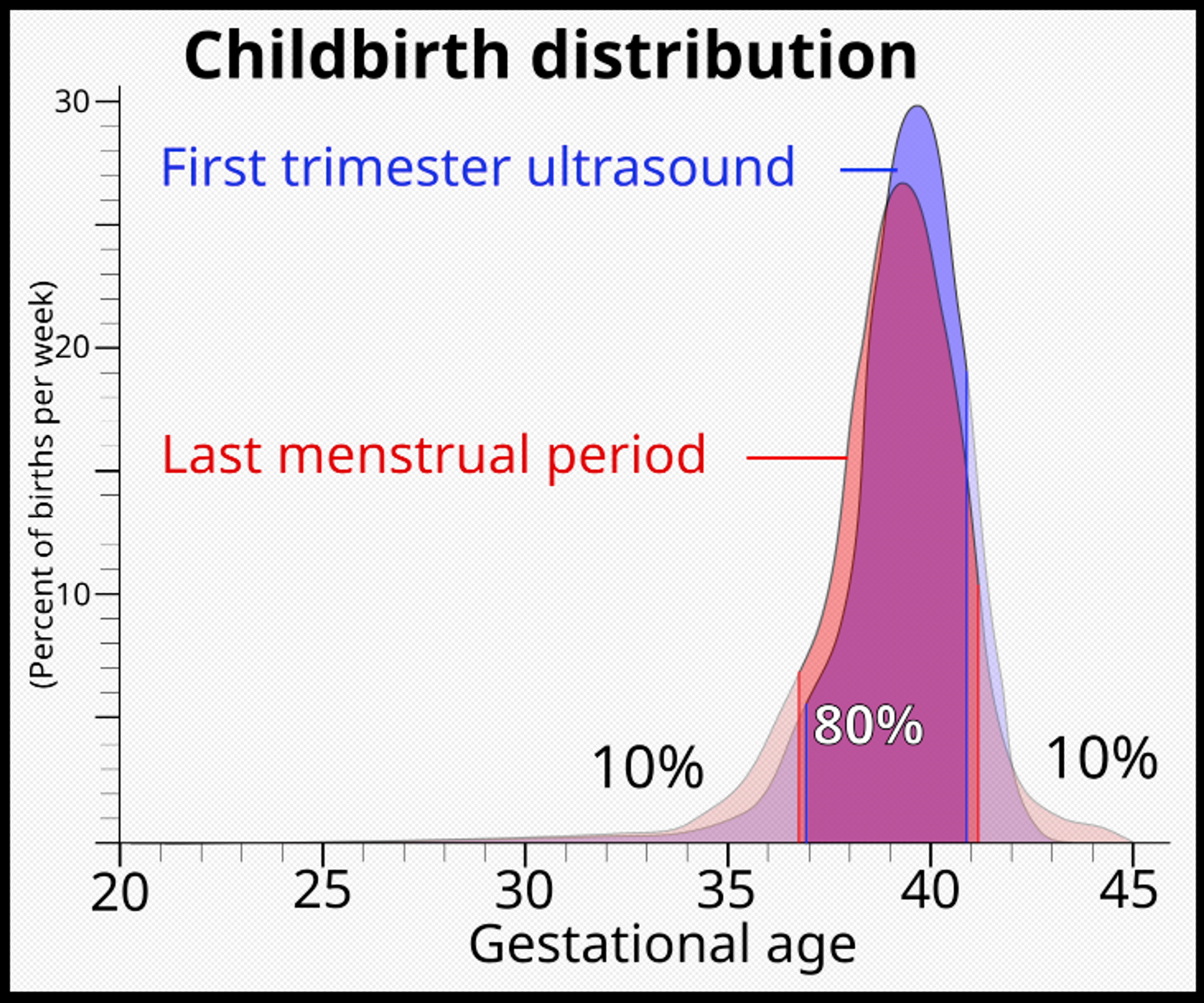How to Calculate How Many Weeks Pregnant You Are
Posted August 22, 2024Tl;dr
Pregnancy is calculated based on the first day of your last period. You can have just become pregnant and be considered 2+ weeks pregnant. It’s pretty weird actually so let’s dive in to explain this better!
Using the date of the first day of your last period (also referred to as LMP), you can calculate the number of weeks you are pregnant. Just count the weeks from your LMP to today.
You might not know when this date was exactly, and that’s okay! You don’t always need to know exactly how many weeks pregnant you are in order to get an abortion.
When does being certain of the number of weeks matter for an abortion?
- If you’re trying to decide between pills or an in-clinic procedure. Clinics will only offer pills to folks 10 - 12 weeks pregnant or less.
- When you’re potentially close to a cut off for services (like 12, 15 or 22 weeks), either because of the provider or state laws (when you enter the first day of your last period our practicality sort will automatically filter out clinics you aren’t eligible for based on your estimated gestational duration).
- If you’re going to travel a long distance to get an abortion - we hear stories regularly of folks flying across the country and then being too pregnant to get an abortion at the clinic they traveled to.
So, how do I calculate how long I've been pregnant?
Sometimes it can be difficult to pinpoint exactly how many weeks pregnant you are but, there are two ways to figure it out:

The most common and typically easiest to track is from the last menstrual period (LMP).
The first day of the LMP is considered day 1 of the pregnancy. We say “easiest” to track because a lot of people have regular periods or track their cycles. However, not everyone has a 28-day cycle, cycles can vary in length and not everyone tracks their period!
So, in other words, pinpointing the exact day of conception can be challenging, which is why the first day of the last menstrual period (LMP) is used as a standard reference for dating pregnancy.

An ultrasound is the most accurate form of pregnancy dating.
And the longer you’ve been pregnant, the more helpful an ultrasound may be. Sometimes, the ultrasound and the LMP dating can be completely different. This happens because pregnancy development happens at different paces for everyone. The most accurate time to determine the length of pregnancy with an ultrasound is in the first trimester when the pregnancy is small. The larger the fetus, the harder it can be to get an exact date because of different growth rates.
Find ultrasound providers near you
If you need an ultrasound and are in a state with abortion restrictions, here are some trusted providers that can help you.
Still with us? There’s one more thing to explain: pregnancy dating starts from your last menstrual period but conception happens 2 weeks later (again, this is another arbitrary average). So the doctor may tell you are 12 weeks pregnant but you had sex 10 weeks ago. That means your pregnancy is 100% textbook - conceived 10 weeks ago and 12 weeks pregnant are the same thing. The first day of your last period was “medically” when the pregnancy began but conception happened 2 weeks later to account for the time before ovulation and conception.
So, to recap...
The ultrasound is the most accurate form of pregnancy dating, but if you can’t get one, you’ll have a good estimate by going from the first day of your last period. And if you aren’t sure when that was, try to remember when you had sex that could have resulted in a pregnancy and add 2 weeks!

Why is this so weird?!?!
So many reasons but mainly because everyone’s body is different, menstrual cycles can be irregular and the window of fertilization varies. Basically, measuring pregnancy isn’t an exact science and a lot of it is arbitrary.
Let’s go back to how doctors currently measure the length of pregnancy. This method, known as "Naegele's Rule," was introduced by German obstetrician Franz Naegele (1778 to 1851). Thanks to Naegele, an "average" pregnancy lasts 40 weeks or 280 days. To estimate the due date, Naegele's Rule adds 280 days to the first day of the person's last menstrual period (LMP). Human pregnancies vary a lot, and factors like the pregnant person’s age, genetics, nutrition, and length of the menstrual cycle can impact the actual length of being pregnant. Unfortunately, Naegele’s Rule doesn’t account for any of these unique factors.
To determine the gestational duration, medical professionals take averages of measurements, like the size of the fetus and development stages, based on the assumed 40-week timeline. These measurements help determine the estimated duration of gestation, but they still rely on the assumption of a standardized 40-week pregnancy, which doesn’t accurately reflect the factors that can affect pregnancy development.
And to really blow your mind, the concept of trimesters are also made up — basically, it was more convenient for doctors to divide the 40 weeks by 3. But there is hope that as science and technology advances researchers and doctors can find other ways to differentiate the stages of pregnancy to accurately reflect these variations in development.
Naegle’s Rule and these arbitrary measurements for development not only shape medical practices but are also used against abortion seekers in legislation and abortion restrictions. Why is there a 6 week ban abortion? Or a 15 week ban on abortion? Like the idea of trimesters, it’s all made up.
What’s more, these restrictions ignore the complexities and individual circumstances of pregnancies, which forces pregnant people to carry pregnancies to term against their will or before they even realize they are pregnant. The enforcement of such bans ignores the expertise of medical professionals and undermines the doctor-patient relationship, replacing it with political agendas.
The reality is that gestational limitations on abortion harm pregnant people.
You can help protect abortion on the federal level by going to Abortion Justice Now.
Have questions? Contact the M+A Hotline at (833) 246-2632 to speak to a physician.


